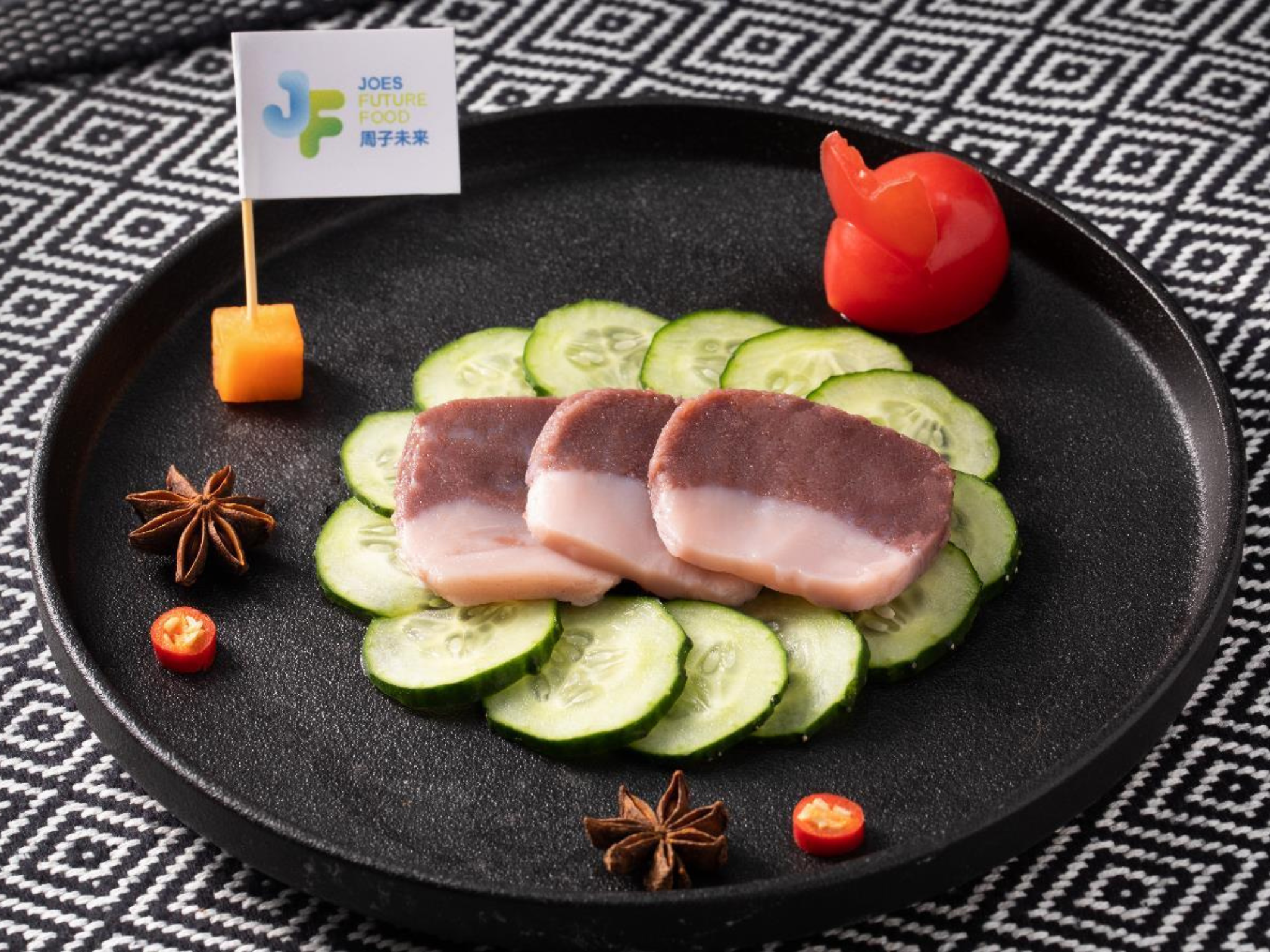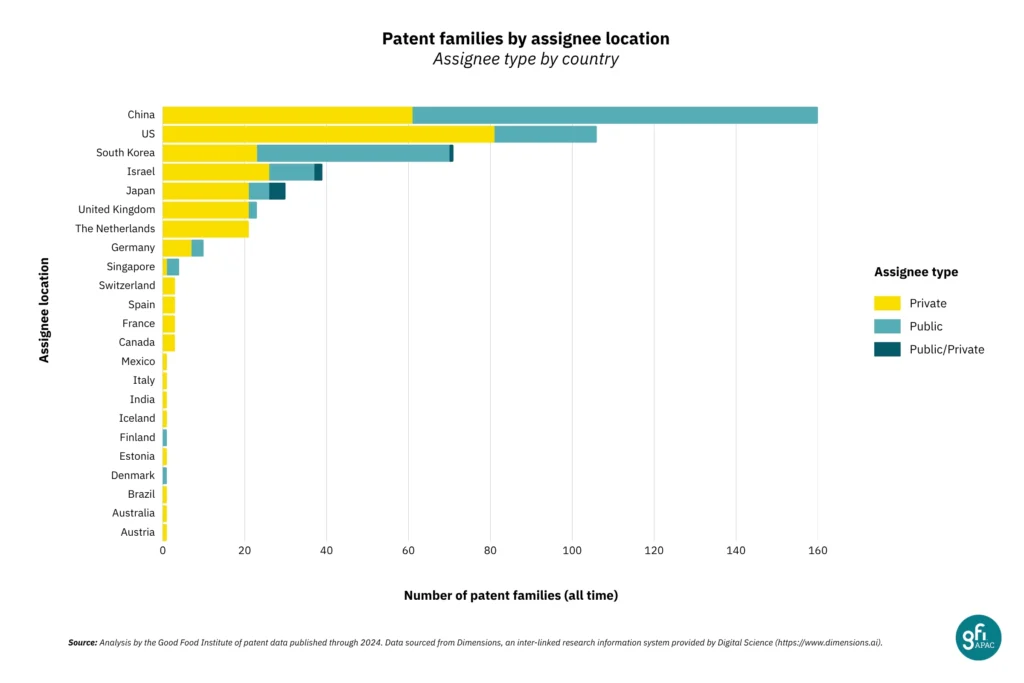
A leader in green energy and electric vehicles, China is spearheading the protein transition too, with more cultivated meat patent applicants than any other nation.
Could China be winning the alternative protein innovation race?
Experts suggest that as the world’s largest consumer of meat, it can only decarbonise if half of its protein supply comes from alternative sources by 2060. And the country is responding to that call, mirroring its advances in green energy, mobility, and artificial intelligence.
New analysis by the Good Food Institute (GFI) APAC has found that of the top 20 all-time patent applicants for cultivated meat, eight are from China. That’s twice as many as the next on the list, Israel (with four applicants), followed by three each from South Korea and the US.
“Given that China’s earlier commitments to accelerating clean energy technologies are what ushered in a worldwide shift towards electric vehicles and solar power, China’s heavy involvement in the ‘future food’ sector has the potential to single-handedly drive down global production costs and turn niche products into mainstream staples,” Mirte Gosker, managing director of GFI APAC, told Green Queen.
“China is strategically positioning itself as a locus of technological innovation, government-funded R&D, and policy leadership that can supercharge Asia’s ascendant ‘future foods’ industry,” she added.
China tops list of cultivated meat patent families

While the US leads in total unique patent applications, thanks mostly to Californian firm Upside Foods’s 143 filings, patent families are a better indicator of where technical innovation is most diverse, according to GFI APAC.
This is because patent families are collections of applications related to the same invention, while unique patents include individual patents filed for the same invention in multiple jurisdictions. So a higher number of patent families indicates progress on a wider range of scientific fronts.
The number of patent families is significantly greater from Chinese entities than other markets (totalling 160), with cultivated pork maker Joes Future Food leading the way in China with 25 applications. Globally, it is only surpassed by Upside Foods, which has 43 patent family filings.
While these patents cover a broad variety of technological innovations, they are all related to animal cell cultivation for food. Specific applications include cell line development, cell culture media development, cell scaffolding for creating particular meat products, or enabling technologies to produce cultivated meat more efficiently, GFI APAC said.
It’s worth noting that China’s applicants include multiple universities, such as Zhejiang University (21 patent families), Jiangnan University (16), and Ocean University of China (12). This suggests “very strong” government interest and an intentionally collaborative approach to build a national cellular agriculture ecosystem.
The country’s universities have filed more cultivated meat patents than public institutions in the US and Europe combined. In fact, Asia-Pacific is home to more cultivated meat patents than North America and Europe collectively.
Asked why China is home to such a high number of patents, Gosker contended: “By mastering the art of making delicious and affordable protein directly from animal cells, China can produce a whole lot more of it, while bolstering its self-sufficiency.”

Public support for alternative protein ramps up in China
The patent research comes on the back of a big few months for China’s alternative protein ecosystem. At the annual Two Sessions summit, top government officials called for a deeper integration of strategic emerging industries (which included biomanufacturing), and identified “strengthening IP protections for microbial proteins” as a food system priority.
In an official notice about China’s agricultural priorities before the summit, the Ministry of Agriculture and Rural Affairs (MARA) identified the safety and nutritional efficacy of alternative proteins as a key priority, while research in novel food tech to create the next generation of food was also highlighted.
And a week later, the No. 1 Central Document (which signals China’s top goals for the upcoming year), underscored the importance of “building a diversified food supply system”, including efforts “to cultivate and develop biological agriculture and explore novel food resources.” The following day, a briefing by MARA featured a call to action to “develop new food resources such as plant-based meat”, according to GFI APAC.
At the start of the year, the country saw its first alternative protein innovation centre open in Beijing, fuelled by an $11M investment from public and private investors to develop cultivated meat and fermentation-derived proteins.

And in May, the Beijing Municipal Commission of Development and Reform released a 2025-27 joint action plan with the Pinggu District Government, marking the capital’s first district-level special policy to advance the green economy. It’s also the first time China has released a government-issued action plan specifically for alternative proteins.
Further, the national government’s current five-year agriculture plan encourages research in cultivated meat and recombinant proteins, while the bioeconomy development plan aims to advance novel foods. And President Xi Jinping has called for a Grand Food Vision that includes plant-based and microbial protein sources.
China has additionally formed a new UN working group with its regulatory counterparts in Singapore, South Korea, and Saudi Arabia, which centres on the implementation of global guidelines for food safety assessments of cell culture media for cultivated meat production. These will help streamline regulatory review processes and fast-track the market entry of these proteins.
“One cannot overstate the significance of Asia’s largest economy putting cultivated meat and other novel ingredients at the centre of its national food strategy,” said Gosker.
“It remains to be seen whether the country’s political leaders will ultimately pull all of the policy and manufacturing levers at their disposal – but staking out a key role in the alt protein sector’s development all but guarantees that if cultivated meat becomes a globally traded commodity, China will join Singapore, South Korea, and other forward-thinking nations in reaping the rewards.”
The post Is China Leading the Cultivated Meat Innovation Race? A New Patent Analysis Argues the Case appeared first on Green Queen.
This post was originally published on Green Queen.